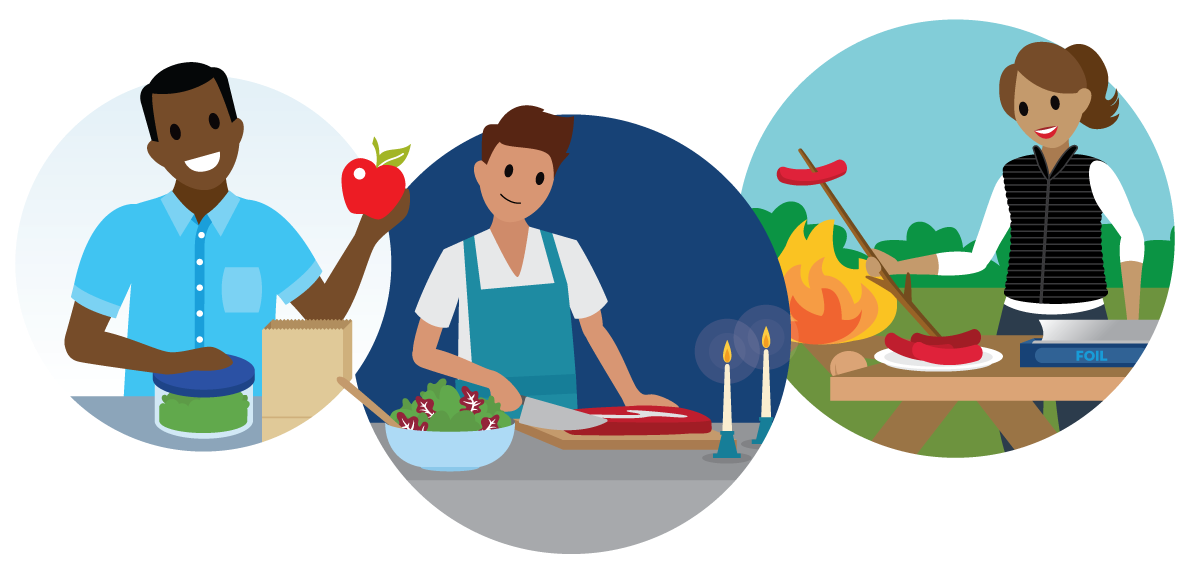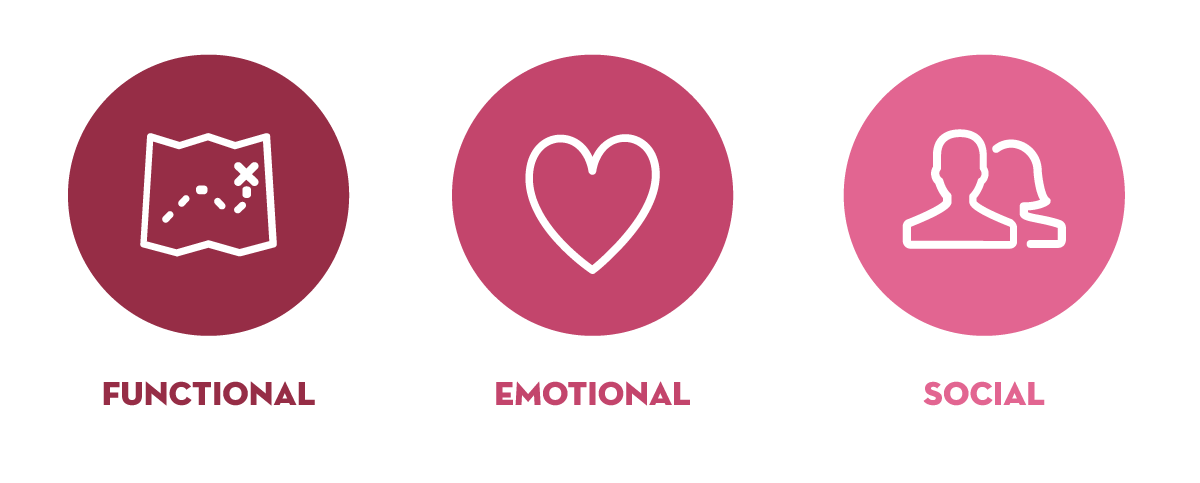Implement Jobs to Be Done
Learning Objectives
After completing this unit, you’ll be able to:
- Describe the common elements of Jobs to Be Done.
- Define the three job dimensions.
It’s All in the Ingredients
The Jobs to Be Done framework has been put into practice through many approaches. So it might be helpful to look at the theory by thinking of the elements of the framework as the ingredients in a cake.

“The perfect cake” actually differs according to the situation and occasion. While there probably isn’t a recipe that covers both a three-tier wedding cake and a toddler’s birthday cake, you can guess that at their fundamental level, both cakes are made of similar ingredients. In the same way, the elements of the Jobs to Be Done framework remain consistent. While all approaches to the framework use similar core principles and elements, you may need to modify how you use it depending on your use case.
Back to the Basics
When thinking of the Jobs to Be Done formula, you must first consider four important elements: the job performer, the job to be done, the circumstances, and the needs.
Job Performer
The job performer is the person or group of people who are trying to get the specific job done. They will be the primary consumer of the solution. Note that the job performer isn’t always a job title or persona, but rather the person or people who understand the job.
Also important to note here is that a person rarely solves a problem or uses a product in isolation. The impact of a product or experience often reaches more than just the primary customer, impacting the social dynamics of a team, family, or even community at large. Considering these broader social dynamics is a core part of Relationship Design, and they should be reflected in your journey maps to the extent that you can understand them.
Job to Be Done
The job is the primary objective of the job performer. This can be a problem they want to solve, something they want to avoid, or anything else they are trying to accomplish. While there can be sub jobs, all of the customer’s needs and motivations are defined around the main job to be done. This main job has all four of the common principles: customer-centric, solution agnostic, stability, and measurable outcomes.
Circumstances
Understanding the circumstances and context of the job performer and job ensures that the job stays relevant to the organization. Adding contextual details to a job greatly influences the scope of innovation and the process of designing a solution. Circumstances typically refer to time, place, and the manner in which someone wants to get a job done.

Let’s look at a quick example. If the job was to “prepare a meal,” you might uncover factors about how the job will be performed by exploring different contexts:
- Prepare a meal when I’m camping.
- Prepare a meal I can eat quietly at my desk.
- Prepare an impressive first-date meal.
Note that the examples above highlight functional, emotional, and social dimensions of the job at hand. Again, that’s one of the beautiful things about Jobs to Be Done: It addresses functional requirements while also specifically mandating that you consider users’ social and emotional needs.
Circumstances also influence how customers define quality and success. In the example above, if the job performer is trying to prepare a meal while camping, they may determine that the job has been successfully accomplished with a hot cup of instant noodles. However, that same job performer may not look to instant noodles when they think about a successful first-date meal. In that case, their understanding of the job being successfully accomplished may include multiple dishes, appetizers, and possibly dessert. No matter how delicious, a hot cup of instant noodles just wouldn’t do the trick there!
Customer Needs
Once you have the job performer, job, and circumstances identified, the next step is to understand that your solution is dependent on the progress a customer wants to make. To understand progress, you first need to understand what the needs of the customer are. Customer needs can sometimes be challenging to define, as these can differ based on context.
For example, in design thinking, a need is seen as a fundamental motivation or aspiration. In system development, a need is seen as a system requirement for a process to work.
Author and instructor Jim Kalbach, one of the leading experts on the Jobs to Be Done theory, explains in his book, The Jobs To Be Done Playbook, that, “Needs aren’t demands from a particular solution, but an individual’s requirements for getting a job done.”
You can think of a job as the overall object or aim of the job performer and the needs as the success criteria along the way. To uncover customer needs, it’s helpful to consider the following three job dimensions.
-
Functional: What the job performer wants to do. Functional jobs have clear start and end states.
-
Emotional: How the consumer feels or wants to feel when doing the job, or when the job is done.
-
Social: How the customer wants to be seen or perceived when doing the job, or how the job fits into an existing social dynamic. For instance, if a team is collaborating on a project, “hiring” a new tool might be less about how they want to be perceived, and more about how they believe that tool will support their team’s workflow/behaviors/norms.
It’s easy, in many business contexts, to focus on solving for functional needs, as they are often the most easily defined. However, it’s important to understand how emotional and social needs sit alongside functional requirements in defining a single job.

Let’s take a look at an example. This one comes from inside the Salesforce house, but the learnings are readily applied to other ecosystems. Past research with Salesforce admins (the folks who administer Salesforce tools for the organizations they work with) has uncovered a series of common jobs that job performers tend to have.
Functional jobs for admins may include collecting business requirements for stakeholders, integrating data from different data sources, and training their users to use various types of software.
However, even in the enterprise space, job performers have emotional and social jobs as well. Further research indicated that admins want to feel confident with their ability to use code-based tools (an emotional job for admins) and be perceived as Salesforce experts in their company and industry (a social job for admins).
By understanding these emotional and social jobs, we were able to make informed product decisions around in-app walkthroughs that helped to introduce code-based tools to newer admins. We also publicly recognized Trailhead badges that identified admins as experts on certain topics. While the primary goal was to ensure that job performers could successfully accomplish their functional jobs, it was also important to understand the social and emotional jobs to inform a complete solution.
What’s Next?
In the next unit, you examine how to discover customer jobs and the relationship between functional, emotional, and social needs.